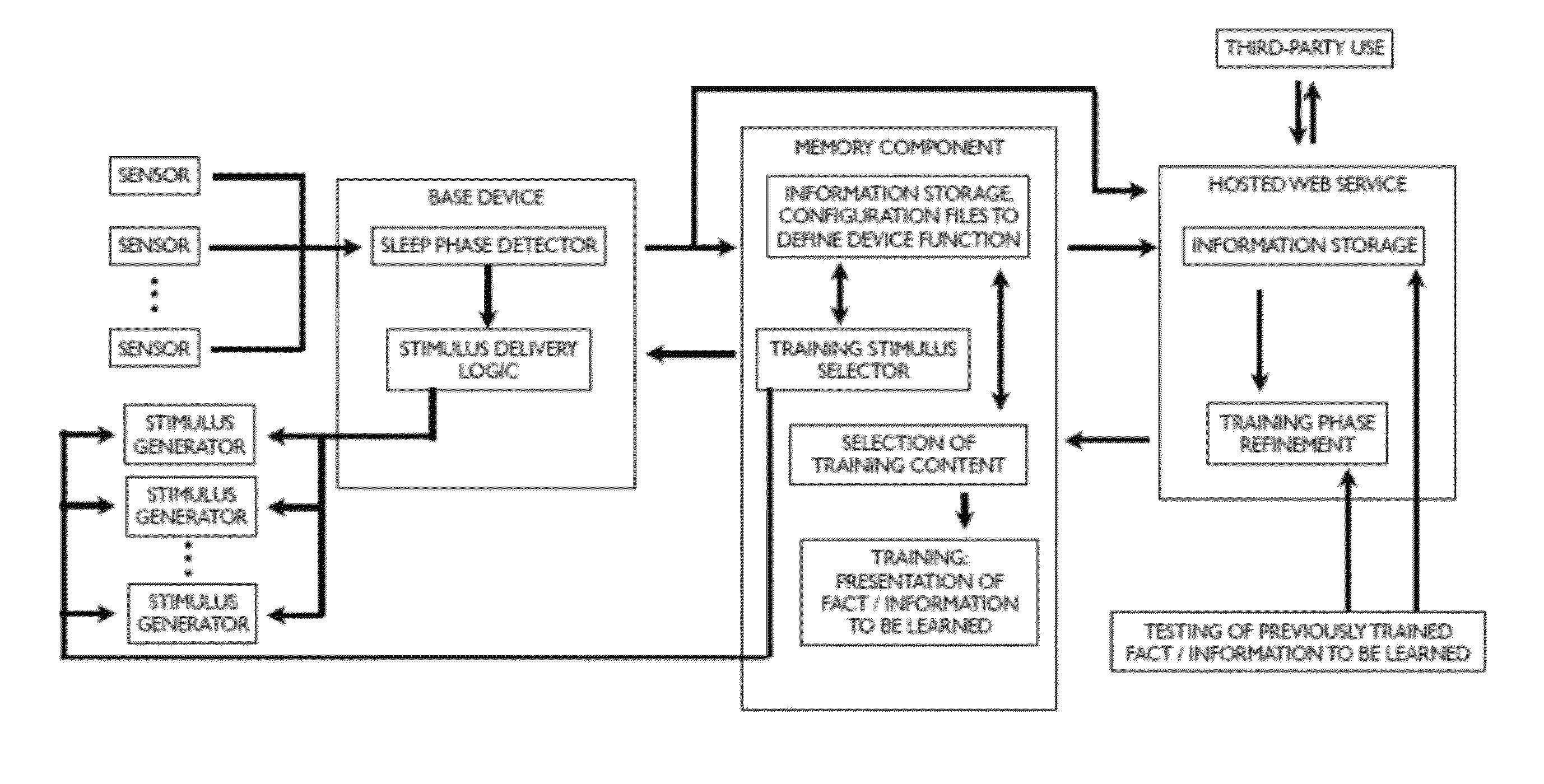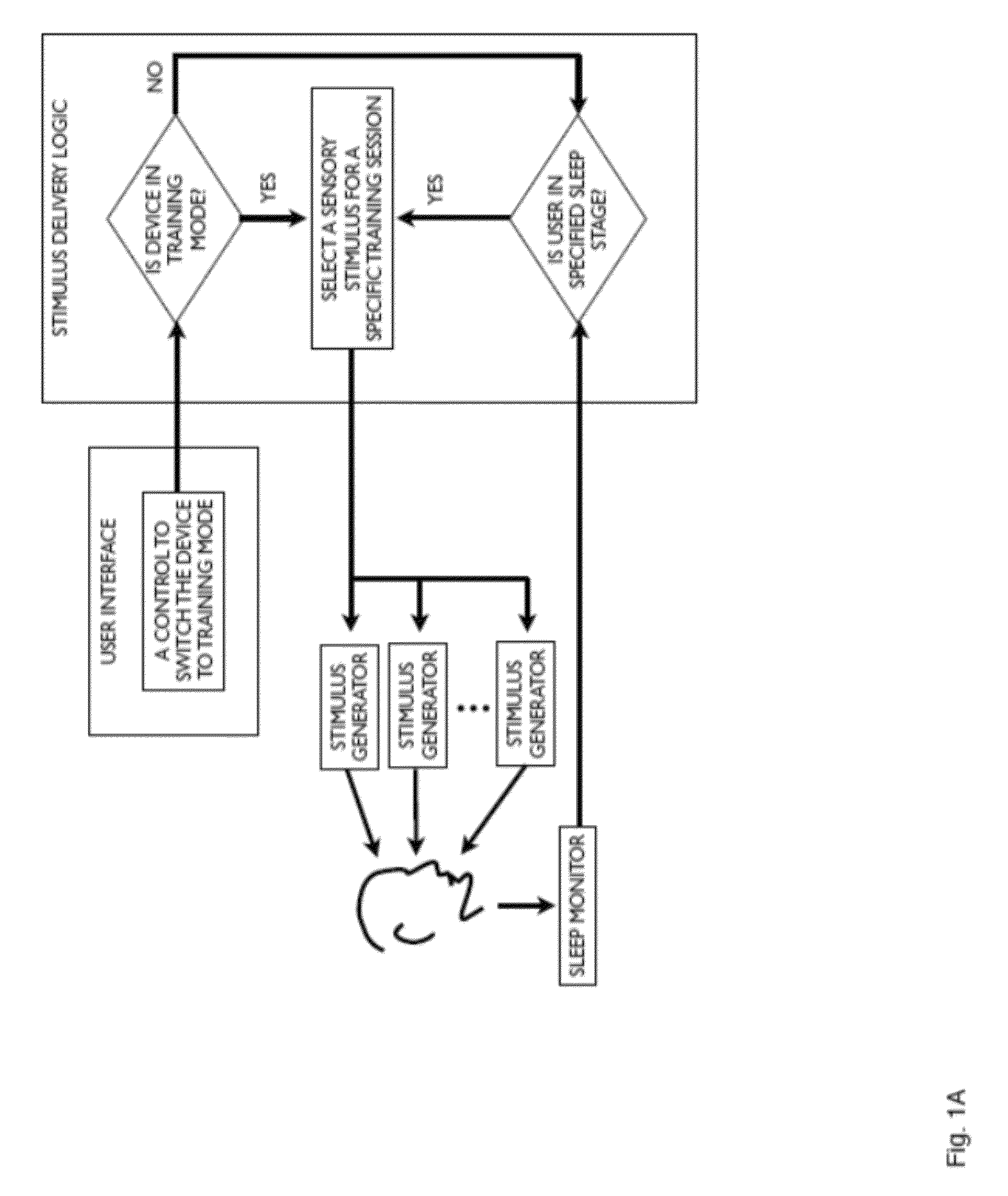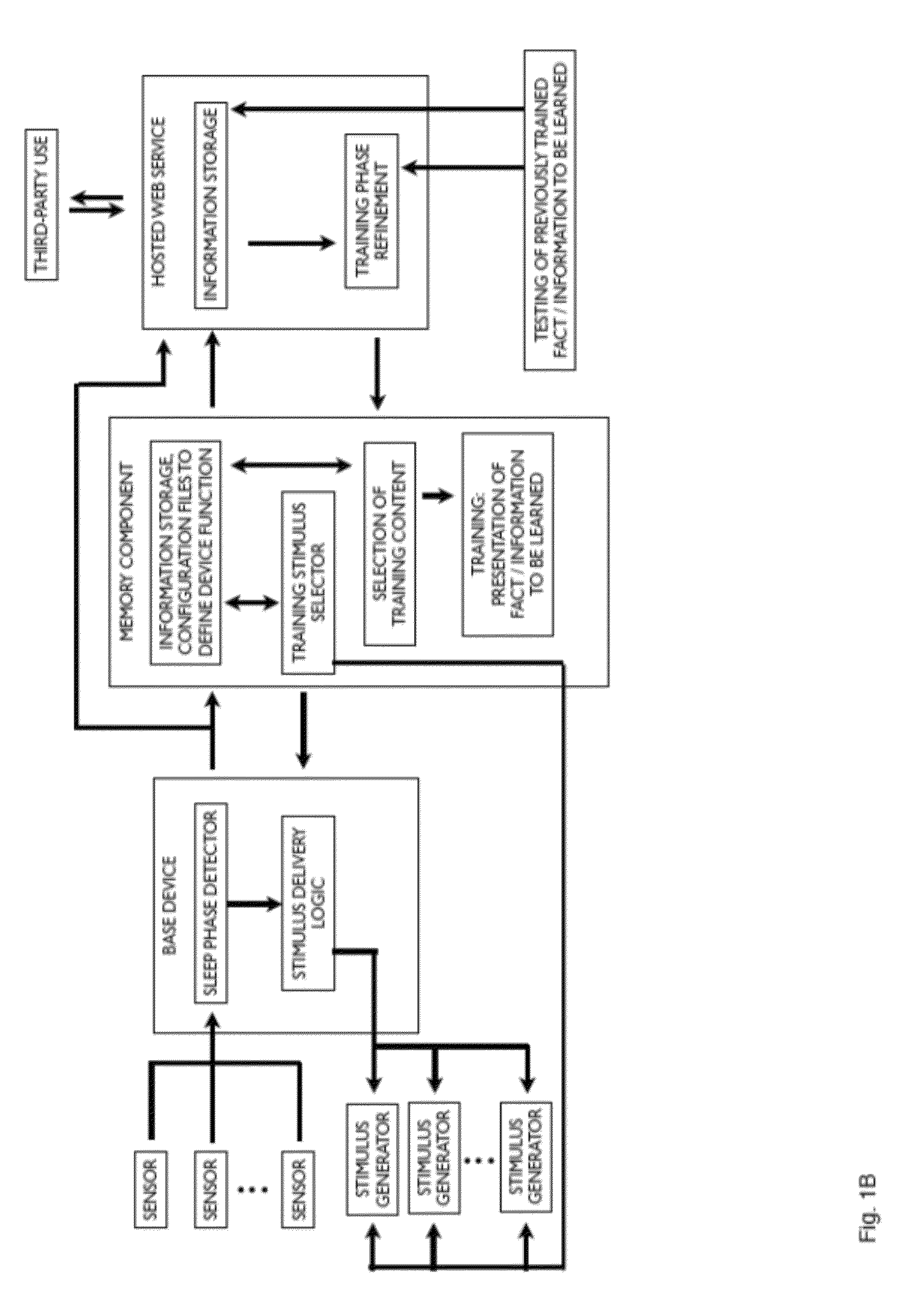Apparatus, system, and method for modulating consolidation of memory during sleep
a technology of memory consolidation and sleep, applied in the field of apparatus, system and method for modulating memory consolidation during sleep, can solve the problems of reducing sleep quality or quantity, disrupting memory function, and interrupting replay, so as to facilitate or interrupt memory consolidation, enhance user's cognitive function, and enhance the effect of user cognitive function
- Summary
- Abstract
- Description
- Claims
- Application Information
AI Technical Summary
Benefits of technology
Problems solved by technology
Method used
Image
Examples
example 1
A Portable Memory Enhancing Device
[0151]In one embodiment, such as that shown in FIGS. 11 to 19, the device is configured as a lightweight, portable device that includes a plastic enclosure or housing. In the example shown, the housing is a black plastic case made by B&W International (e.g. Outdoor Case Type 05). In this embodiment, the device includes a single user interface component, including a two-position, three-pole switch mounted on the top of the enclosure. The default switch position is ‘Sleep Mode’. To enter Training Mode, the user toggles the switch. The switch reads either 5 volts or ground and is connected to a digital input pin of a microcontroller contained in the device. The software installed on the microcontroller reads the state of the switch and sends appropriate control signals for either Sleep Mode or Training Mode. See below for further details about the microcontroller and the control logic achieved by software installed on the microcontroller.
[0152]In this ...
example 2
A Memory Enhancing Device with a Computer-Readable Memory Component
[0163]Some embodiments include one or a plurality of memory storage components that permit data to be read from and written to computer-readable memory. In one embodiment, data is stored on a microSD card coupled to the programmable microcontroller for offline analysis and confirmation of device function. The stored data can also be used in case of power interruption to determine what stage of an experimental protocol a user had reached.
[0164]One advantageous feature of embodiments with data storage components is the capacity for the system to store data about the user's sleep and the times when: a user interacted with a user interface component; the state of or information presented by an indicator on the device was changed; and / or a sensory stimulus was generated. For instance, the device can write to the memory components if a switch position was changed; if an LED was turned on or off; if a stimulus such as a par...
example 3
Alternative Embodiments of Memory Enhancing Device
[0168]In alternative embodiments, the enclosure of a portable memory enhancing device is made of plastic, wood, metal, or another suitable material. Other embodiments of a memory enhancing device use one or more alternative or additional user interface components that allow the user to control device function, chosen from the list of: touchscreen, buttons, switches, and other mechanical or electrical input or selection mechanisms. In some embodiments, the memory enhancing device includes one or a plurality of screens, light emitting diodes (LEDs), or other components to indicate device function by visual, auditory, tactile, or other means. These embodiments are advantageous for indicating to the user the device mode, history, options, and other information.
[0169]In some embodiments, alternative methods for releasing a scent such as an aerosol spray or another technique known to those skilled in the art of generating smells can be use...
PUM
 Login to View More
Login to View More Abstract
Description
Claims
Application Information
 Login to View More
Login to View More - R&D
- Intellectual Property
- Life Sciences
- Materials
- Tech Scout
- Unparalleled Data Quality
- Higher Quality Content
- 60% Fewer Hallucinations
Browse by: Latest US Patents, China's latest patents, Technical Efficacy Thesaurus, Application Domain, Technology Topic, Popular Technical Reports.
© 2025 PatSnap. All rights reserved.Legal|Privacy policy|Modern Slavery Act Transparency Statement|Sitemap|About US| Contact US: help@patsnap.com



